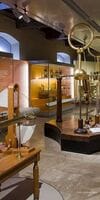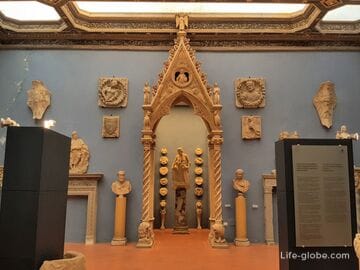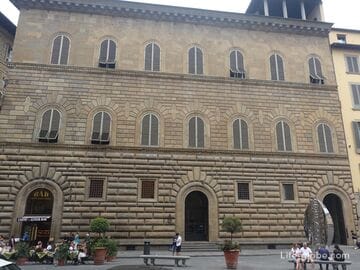The Galileo Museum or the Galileo Museum (Museo Galileo in Florence) is a museum of the history of science and technology in Florence, with collections of Medici, Lorraine, as well as scientific instruments and personal belongings of Galileo Galilei.
The Galileo Museum is located in the historical center of Florence, near the waters of the Arno River, in Piazza dei Giudici.
The museum is housed in the ancient Castellani Palace (Palazzo Castellani, Palazzo Castellani), dating back to the 11th century and known at that time as part of the castle of Altafronte (Castello d'altafronte), which was the fortifications of the city. The castle passed to the Uberti family in 1180, after which the building was completely renovated and rebuilt for use as a private residence after the flood of 1333. Subsequently, the building was bought by the Castellani family, and from 1574 to 1841 it was the residence of Giudici di Ruota, as evidenced by the insignia of magistrates in the lobby of the museum.
Since 1930, the building has housed the Institute and Museum of the History of Science, founded by Andrea Corsini and Prince Piero Ginori Conti, later renamed the Galileo Museum.
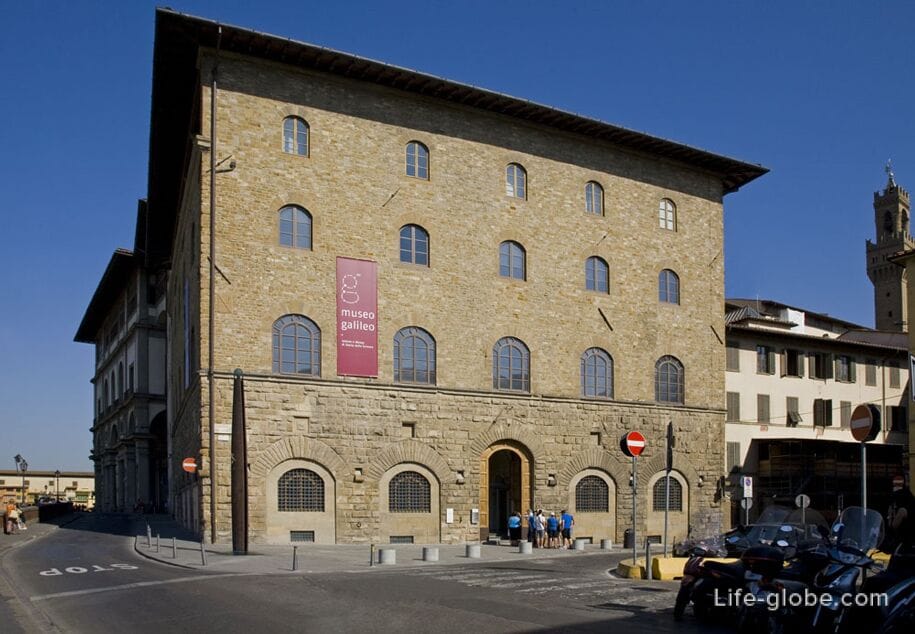
In fact, this is a scientific and technical museum, which previously bore the names of the Museum of Physics, then the Institute and the Museum of the History of Science. Initially, the museum was located in the Uffizi Gallery in Florence, but later it was moved to a separate building.
Today, the halls of the Galileo Museum house one of the most important collections of scientific instruments in the world, which originate from the collections of the influential Medici dynasty and the Grand Dukes of Lorraine.
The Medici collection dates back to the 15th-18th centuries.
The Lorraine Collection contains instruments and experimental instruments collected by the Lorraine dynasty in the 18th and 19th centuries, which testify to the remarkable contribution of Tuscany and Italy to the development of electricity, electromagnetism and chemistry. Exhibits include obstetric wax models from the Hospital of Santa Maria Nuova, the chemical laboratory of Grand Duke Pietro Leopold I and beautiful machines made in the workshop of the Museo di Fisica e Storia Naturale to illustrate fundamental physical laws.
Also in the museum is the "Galileo Tribune", built in 1841 by architect Giuseppe Martelli on the territory of the Museum of Physics by order of Leopoldo II. Here are: the statue of Galileo, frescoes and bas-reliefs depicting Galileo's discoveries, and, above all, the famous instruments of the great scientist: a geometric and military compass, an armed magnet, two telescopes and a telescope lens with which Galileo discovered the moons of Jupiter, as well as a giant armillary sphere designed and built by Antonio Santucci.
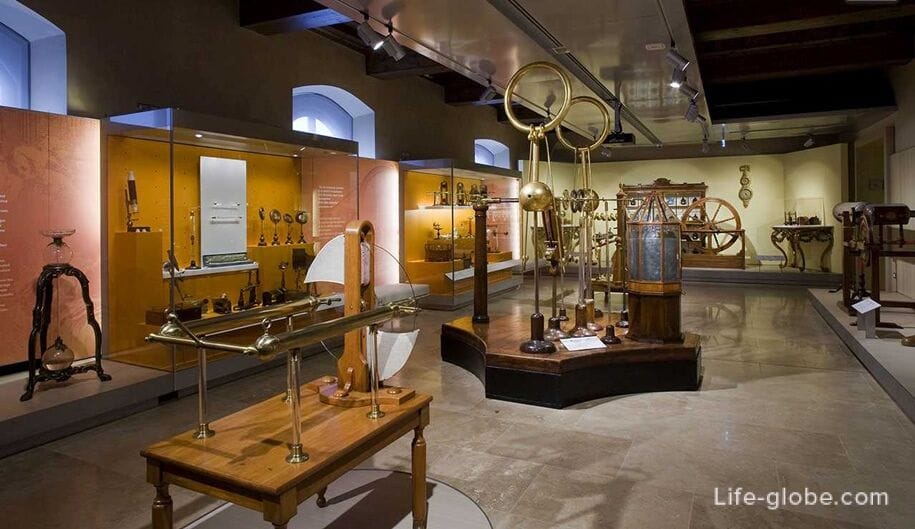
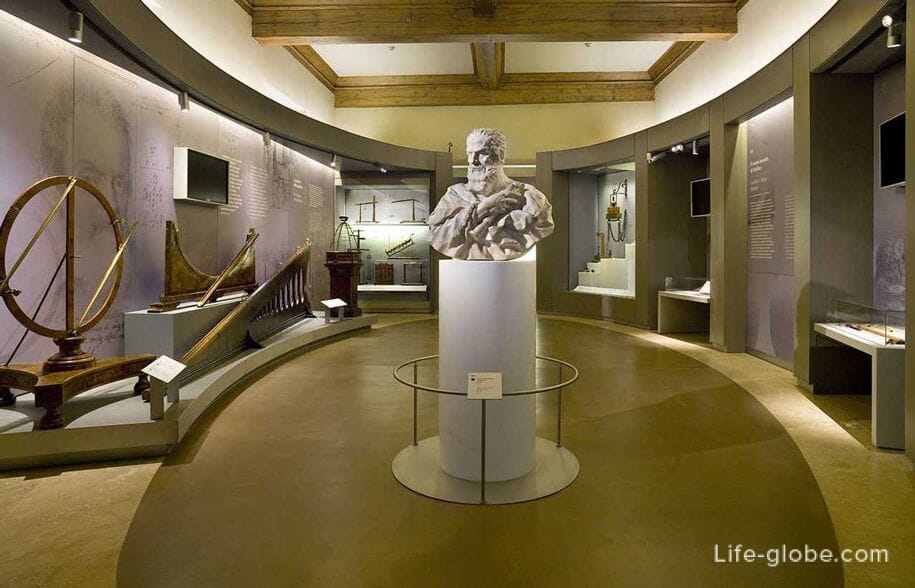
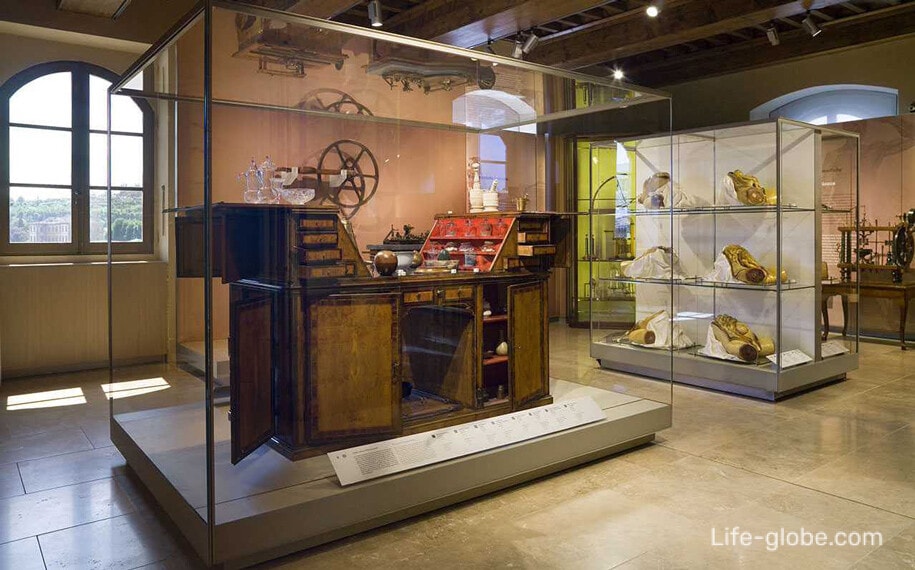
Pietro Leopoldo I Chemical Laboratory
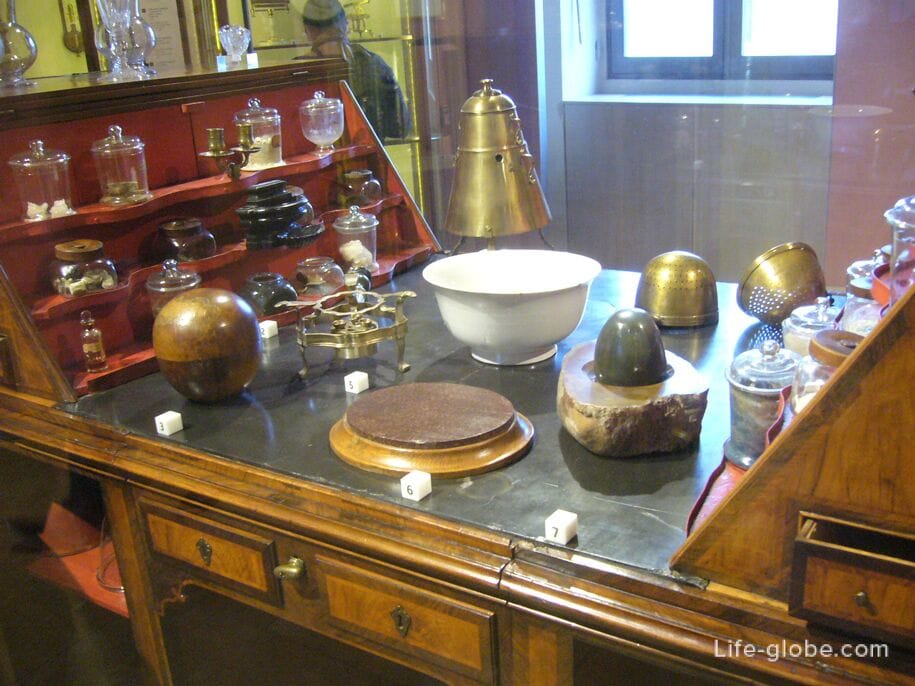
Time measuring devices
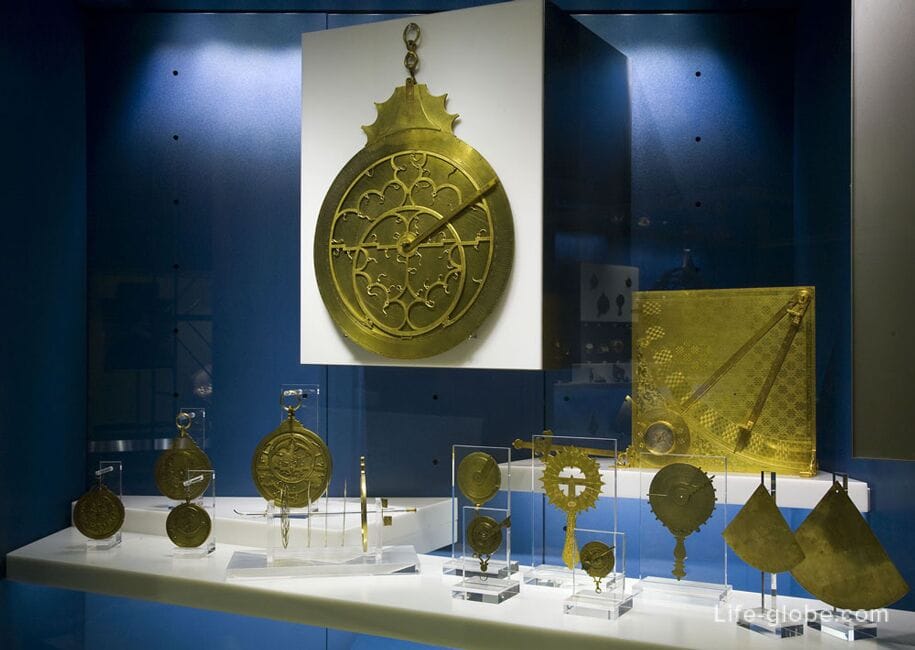
The Arabic celestial globe is probably the oldest in the world
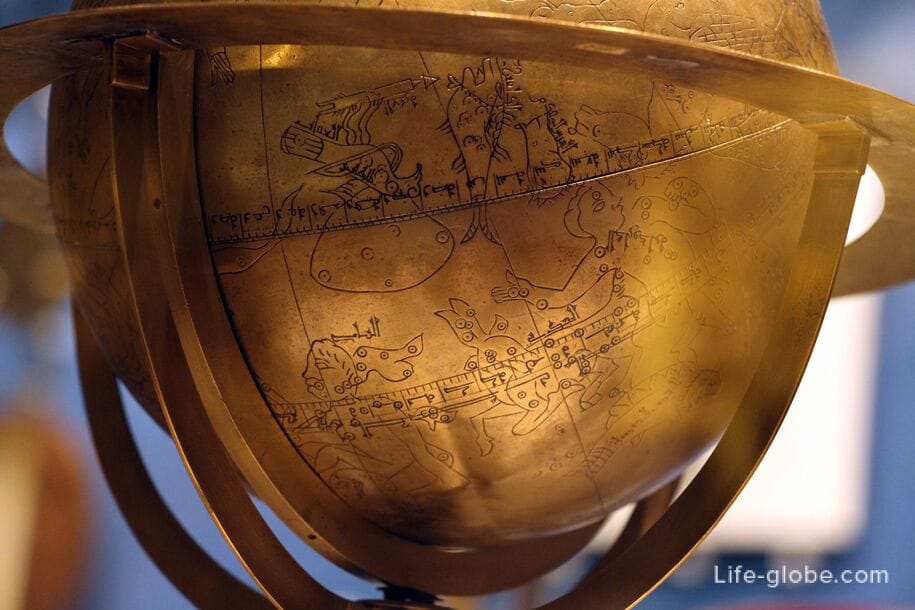
Santucci armillary sphere, in the hall dedicated to the "Representation of Time"
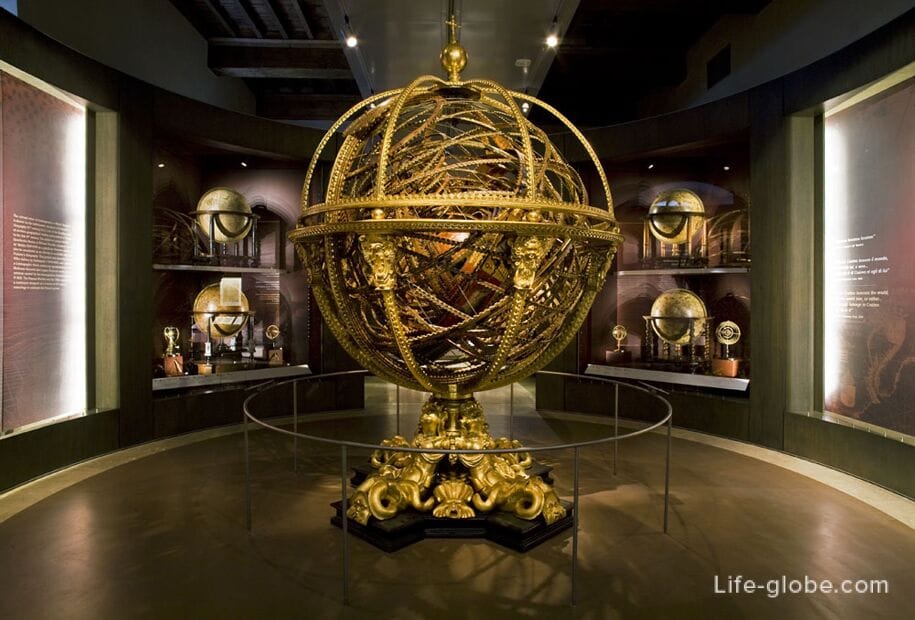
The middle finger of Galileo Galilei's right hand
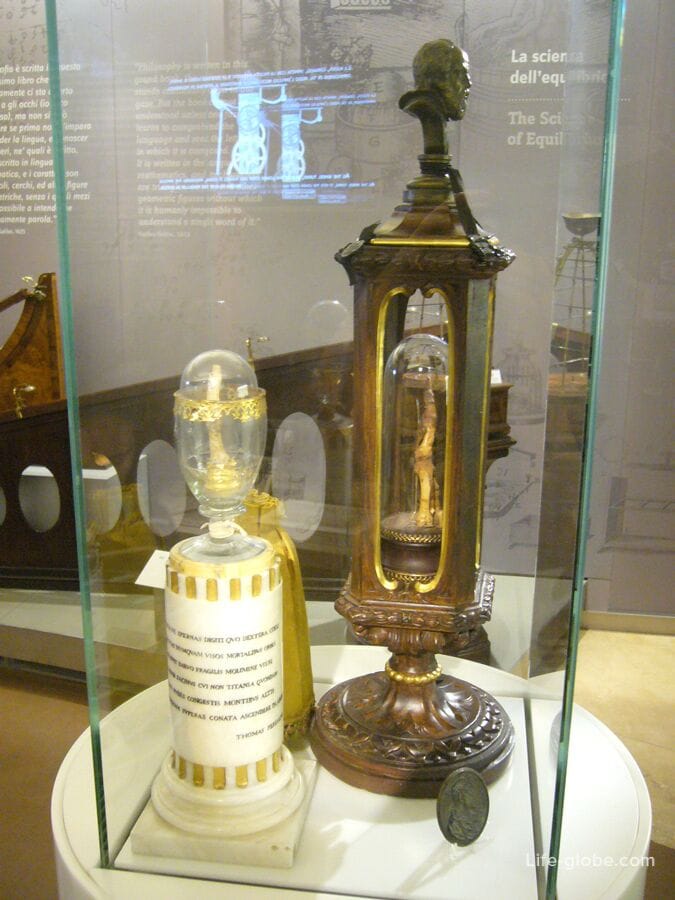
Apparatus for studying elastic and inelastic collisions

Winter stove electric machine
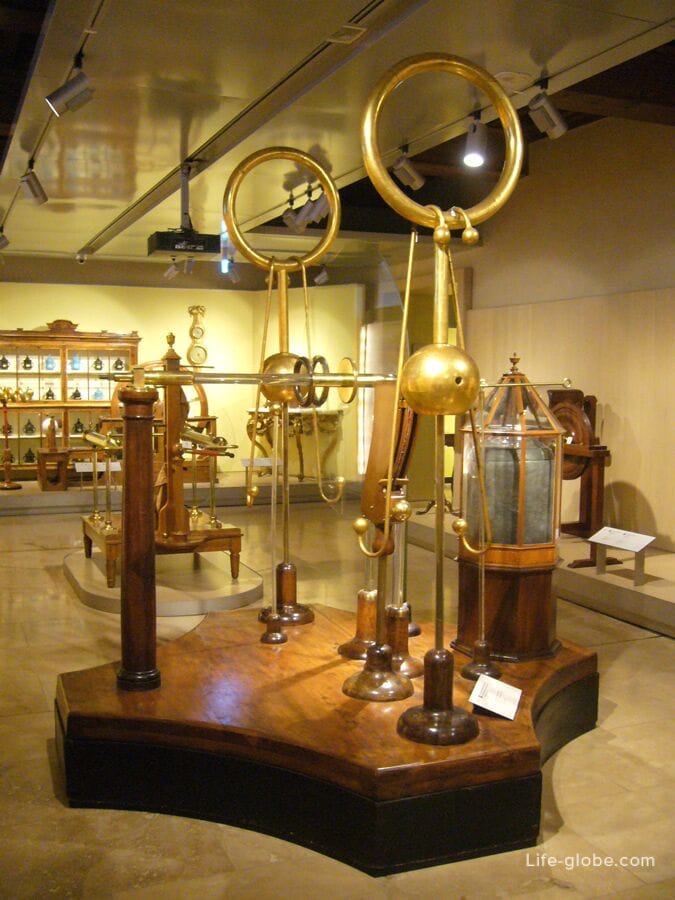
Sundial at the Galileo Museum
On the square, near the entrance to the Galileo Museum, there is a remarkable sundial installed in 2007 and created according to a design project by Louise Schnabel and Filippo Camerota, who thought of the monument as a "mathematical ornament" of the Galileo Museum.
The clock consists of a tall bronze gnomon mounted vertically on the sidewalk, on which brass and travertine inserts are placed to recognize the time and date. The shadow of a glass polyhedron placed on top of the gnomon indicates the solar time and date. The clock is marked on the floor of the square with radial brass lines, and the date is indicated by transverse travertine lines that mark the day path of the Sun at different times of the year, emphasizing the change of months and seasons.

Practical information
The Galileo Museum has a scientific library.
The museum has a bookstore, a cloakroom and toilets.
The Galileo Museum regularly hosts temporary exhibitions, as well as events for children and adults.
Entrance to the Galileo Museum is paid. Children under 6 years old - free of charge. There are discounted tickets.
Tickets can be purchased at the museum's ticket offices or online in advance on the website.
The website of the Galileo Museum in Florence: museogalileo.it.
The address of the Galileo Museum in Florence: Piazza dei Giudici, 1, 50122 Firenze FI, Italy.
Coordinates of the Galileo Museum in Florence: 43°46'04.0"N 11°15'22.0"E (43.767778, 11.256111).
All accommodation facilities in Florence (hotels, apartments, guest houses, etc.), including in the historical center of the city and more remotely from it, can be viewed and booked here




